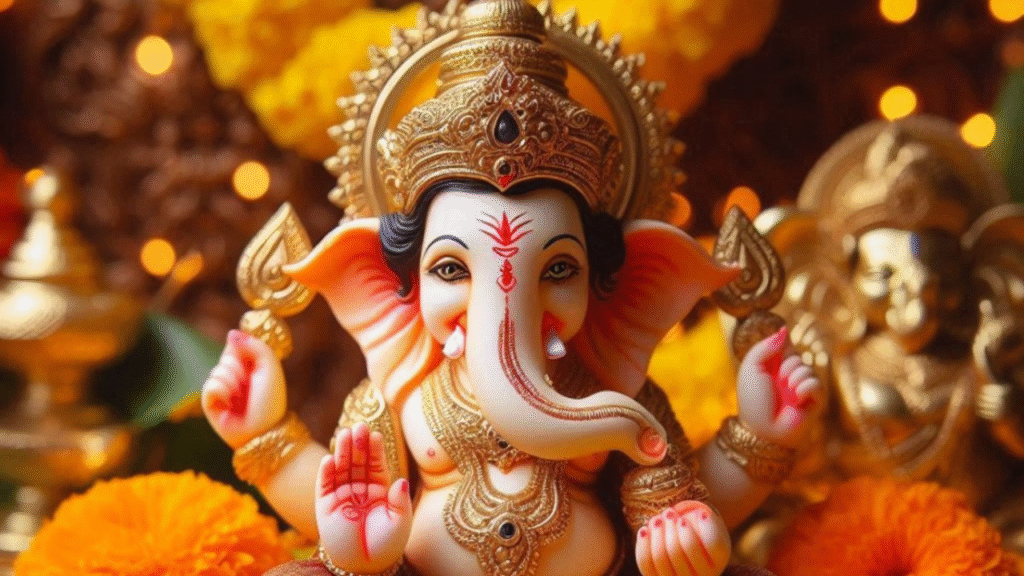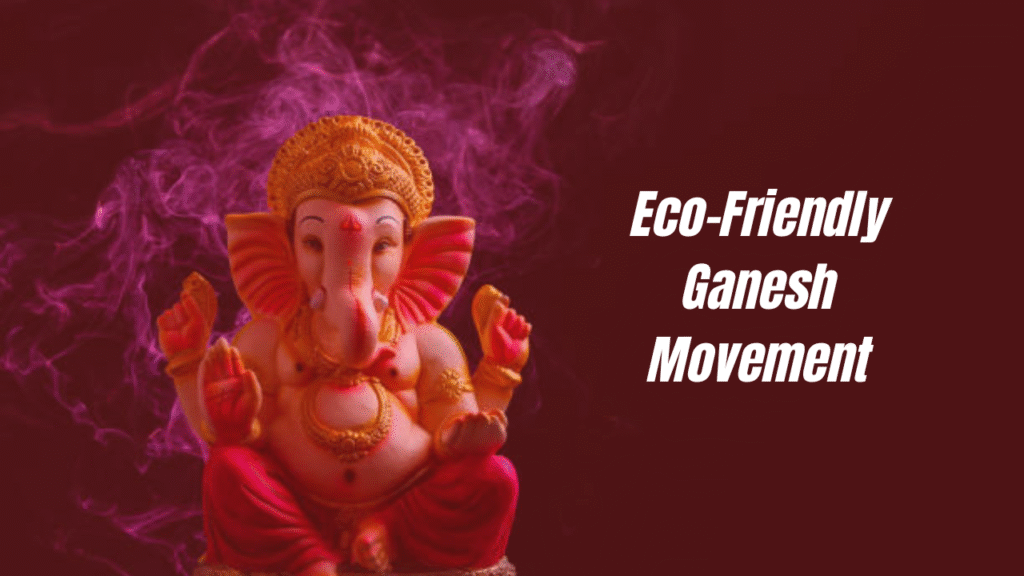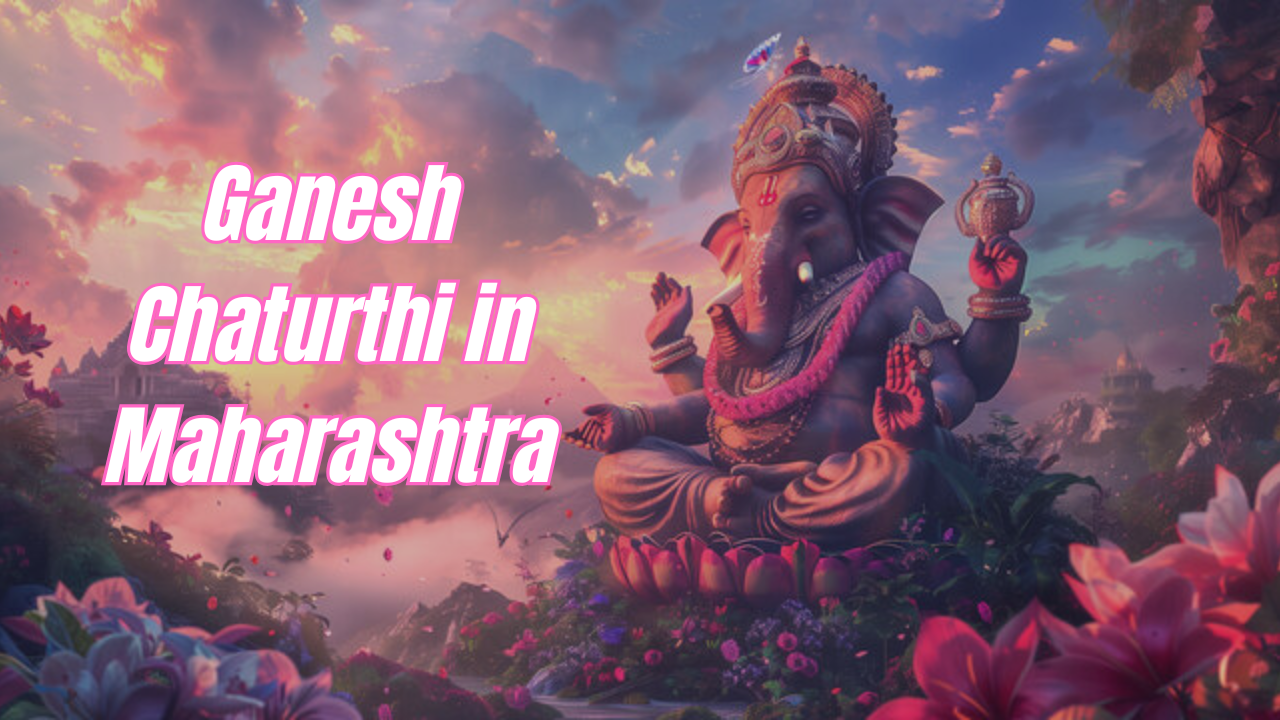Introduction
In the vibrant cultural landscape of India, few festivals evoke the unity, color, and devotion seen during Ganesh Chaturthi—especially in Maharashtra. While images of sweet modaks and the emotional murti visarjan dominate public imagination, there’s far more to this festival than meets the eye.
Ganesh Chaturthi is a deeply rooted social, spiritual, and cultural celebration that reflects Maharashtra’s unique blend of tradition, devotion, art, activism, and community bonding. Introduced into public life by Lokmanya Tilak, the festival transformed into a mass movement and now stands as one of the most significant events in the state’s calendar.
In this comprehensive article, we’ll go beyond the usual rituals to explore the origins, evolution, hidden symbolism, social reform elements, environmental aspects, community involvement, cuisine, and the future of the festival.
1. Historical Origins of Ganesh Chaturthi
Though Ganesh Chaturthi has ancient roots in Hindu scriptures, its public celebration in Maharashtra began only in the late 19th century.
a. Mythological Roots
- Lord Ganesha, the elephant-headed deity, is known as the remover of obstacles, god of wisdom, and patron of the arts.
- His birthday is celebrated on the Shukla Chaturthi (4th day of the waxing moon) in the month of Bhadrapada (August–September).
b. Tilak’s Vision
- In 1893, Bal Gangadhar Tilak transformed the private puja into a sarvajanik (public) celebration to unite Indians during British rule.
- The goal: To instill nationalist sentiment, promote public discourse, and strengthen community bonding.
2. Preparation: More Than Just A Ritual
a. Idols and Artistry
- Artisans in districts like Pen (Raigad) and Chinchpokli create exquisite clay idols months in advance.
- Idol-making is an art form, with themes evolving each year—traditional, eco-friendly, mythological, modern, and even socially conscious (e.g., COVID-19 awareness idols).
b. Mandap Decoration
- Mandals set up elaborately themed pandals (temporary shrines) with devotion and flair.
- Themes range from mythological recreations to replicas of global monuments, raising awareness on environmental or social issues.

3. Rituals and Celebrations: Day-Wise Overview
Day 1: Pran Pratistha
- The idol is installed, and prayers, chanting, and aarti begin.
- Homes and pandals echo with “Ganpati Bappa Morya!”
Days 2–10: Daily Pujas
- Devotees offer modaks, flowers, and durva grass.
- Cultural programs, bhajans, dance, debates, and plays are held.
Day 10: Anant Chaturdashi – The Visarjan
- The idol is immersed in rivers, lakes, or the sea.
- The visarjan is both a farewell and a promise: “Pudchya varshi lavkar ya!” (Come soon next year!)
4. The Symbolism Beyond Rituals
| Element | Symbolism |
|---|---|
| Elephant Head | Wisdom, intellect |
| Large Ears | Listening and patience |
| Trunk | Adaptability and efficiency |
| Mouse (Vahana) | Desire that can be controlled |
| Modak | Inner bliss from spiritual practice |
| Visarjan | Letting go of ego and impermanence of life |
5. Social Impact in Maharashtra
Ganesh Chaturthi has evolved into a vehicle for social awareness, community upliftment, and cultural education.
a. Platform for Social Messages
- Pandals feature themes on education, gender equality, sanitation, road safety, etc.
- Volunteers run blood donation camps, cleanliness drives, and COVID awareness booths.
b. Fostering Local Talent
- Youth get involved in theatre, music, dance, decoration, and event management, nurturing creative and leadership skills.
c. Gender and Inclusion
- Many mandals now encourage women-led pujas and involve transgender communities in festivities.

6. Eco-Friendly Ganesh Movement
In recent years, Maharashtra has seen a significant shift toward green celebrations.
a. The Problem with POP
- Plaster of Paris (POP) idols take months to dissolve.
- Chemical paints pollute water bodies, harming marine life.
b. The Rise of Eco Ganesh
- Clay idols, natural dyes, and seed-infused idols are promoted.
- Home visarjan in artificial tanks is encouraged.
c. Government and NGO Initiatives
- Awareness campaigns in schools.
- Restrictions on idol height.
- Awards for the Greenest Ganesh Mandal.
7. The Culinary Side: Modaks and More
a. Modak: The Star Sweet
- Ukadiche Modak (steamed) made of rice flour, coconut, and jaggery.
- Fried versions and modern innovations (chocolate, dry fruit modaks) are also common.
b. Other Offerings
- Puran Poli, Sundal, Payasam, and Sheera.
- Five-course vegetarian feasts often include seasonal produce and ayurvedic combinations.
8. Ganesh Chaturthi in Mumbai: A Cultural Phenomenon
Mumbai is the beating heart of Ganesh Chaturthi in Maharashtra.
Iconic Mandals:
- Lalbaugcha Raja: The most visited and revered.
- GSB Seva Mandal: Known for its gold-adorned Ganesha.
- Khetwadi, Andhericha Raja, Chinchpokli Cha Chintamani are other major attractions.
Millions queue for hours for darshan (sighting). Celebrities, politicians, and commoners alike pay tribute to Bappa.
9. Beyond Maharashtra: Global Reach
Ganesh Chaturthi is celebrated by Maharashtrians and Hindus worldwide:
- USA, UK, UAE, Australia, and Singapore host public Ganesha processions.
- Temples and cultural centers organize community celebrations with traditional rituals.
10. Future of Ganesh Chaturthi: Tradition Meets Transformation
As Maharashtra balances between ritual and reform, the future lies in:
- Digitally streamed aartis for global devotees.
- Augmented reality idols and virtual visarjans during pandemic times.
- Increased adoption of eco-friendly materials.
- Crowd management apps to reduce traffic and ensure safety.
Conclusion
Ganesh Chaturthi in Maharashtra is far more than a ten-day celebration of modaks and murti visarjan. It is a living heritage—a celebration of faith, identity, creativity, and community spirit.
From the alleyways of Mumbai to the ghats of Pune, from the chants of mandals to the innovations of eco-artisans, the festival embodies a perfect union of devotion and dynamism. As long as people chant “Ganpati Bappa Morya,” this festival will continue to evolve—rooted in tradition but open to transformation.
Table: Key Features of Ganesh Chaturthi in Maharashtra
| Aspect | Details |
|---|---|
| Main Deity | Lord Ganesha (Remover of Obstacles) |
| Duration | 1–10 Days (ends on Anant Chaturdashi) |
| Major Cities Celebrating | Mumbai, Pune, Nagpur, Nashik, Aurangabad |
| Unique Ritual | Murti Visarjan (Immersion of Idols) |
| Popular Food | Modak, Puran Poli, Sundal |
| Historic Reformer | Bal Gangadhar Tilak (1893) |
| Environmental Focus | Clay idols, natural colors, artificial ponds |
| Cultural Activities | Bhajans, drama, debates, social initiatives |
FAQs About Ganesh Chaturthi in Maharashtra
1. Why is Ganesh Chaturthi more popular in Maharashtra than other states?
Maharashtra’s public celebration was popularized by Lokmanya Tilak to encourage unity against colonial rule, making it both a religious and political movement.
2. What makes Lalbaugcha Raja special?
It is the most famous Ganesh idol in Mumbai, believed to be wish-fulfilling. Millions line up for darshan, sometimes waiting up to 24 hours.
3. What is the meaning behind Visarjan (immersion)?
It symbolizes life’s impermanence. Just as the idol dissolves into water, we are reminded to let go of ego and attachments.
4. Are there alternatives to water immersion?
Yes. Many now opt for eco-friendly home visarjan in tanks or use dissolvable idols that turn into plants after immersion.
5. How can I participate if I don’t live in Maharashtra?
You can:
Attend local Ganesh Utsavs organized by communities.
Join online aartis and darshans.
Create a simple home altar with a clay Ganesha.
